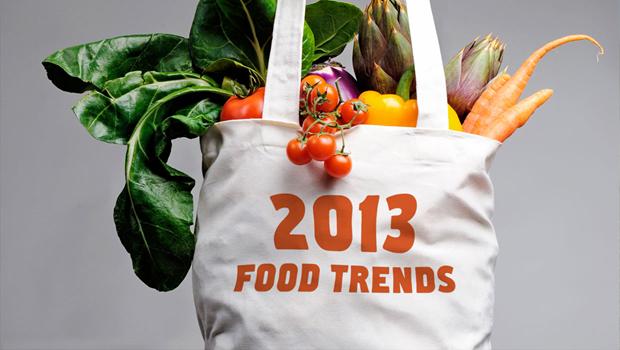LOHAS Food Trends for 2013
I am fortunate to be able to connect with various experts in a variety of LOHAS related categories as well as research various articles predicting what to expect as new opportunities and market trends in the growing LOHAS market. Based on my discussions and findings, here are a few things that I think stand out in the organic and natural food vertical of LOHAS:
1. A growing awareness of ingredients and sourcing – organic, GMO, fair trade
Those who are opposed to genetically-modified organisms in their food — everything from grains to fish — aren’t known for staying quiet. Just recently, anti-GMO activists hijacked Cheerio’s Facebook page. But following the defeat of California’s Proposition 37, which would have been the first legislation to require GMO labeling, the community is bound to get louder than ever.
2. Closing the Price Gap on Organic
Consumers will be able to find certified organic products in all sections of the supermarket and pharmacy. Expect an evolution of other industry sectors, such as organic personal care, pet food (more like pet treats) dietary supplements. What manufacturers create or retailers carry all depends on the target customer. Capturing discriminating LOHAS (Lifestyles of Health and Sustainability) customers goes well beyond one person: it spreads to their families and pets.
3. Accessible Organic
Larger organic production, from farm acreage expansion to processing facilities, will translate into organic landing where it is most needed: schools, hospitals, food banks, convenience stores and in mainstream America’s home. Some communities are better served by organic than others, but organic will continue to pop up as distribution channels increase beyond grocery stores. New markets will open to organic food growers, makers and sellers as consumers look for cleaner food beyond grocery stores.
4. Gluten free integrated into all food options and will be a common part of menu options
The gluten-free market, by comparison is expected to have reached US$1.3 billion in sales by 2011. However, the gluten-free market, which is still in its early growth, is expected to achieve higher growth rates (31%) from 2011 to 2014. Sales in the category have doubled in the last 5 years and are expected to double again in the next 3 years to $5.5 billion by 2015. The new ‘gluten-free’ is already here. With food allergies rising worldwide — at least seven per cent of Canadians have a food allergy — more companies will build facilities dedicated to manufacturing foods free of allergens like dairy, peanuts, egg, soy and shellfish.
5. Healthy Fast Food -Other Chipotle type chains on the rise.
According to Baum & Whiteman, other chains are following suit, but need to make sure they capitalize on more than just comfy décor and made-to-order food: Companies will needs to wear its heart on its sleeve … incorporating not just value, but values. Expect more fast food chains to promote sustainable food choices and friendly casual atmospheres. Giants like McDonald’s are embracing this with their new calorie information menus
6. Food waste awareness on the rise
Americans throw out nearly half of their food, tossing up to 40 percent in the garbage each year, according to a new study. That adds up to an estimated $165 billion according to Natural Resources Defense Council. As more people seek to squeeze money out of their budgets this will be scrutinized as more become aware not to mention restaurants that may waste more .
7. Chia seed and fermented beverages rule
The nutty tasting Chia seed has more protein, energy and fiber than any other whole grain. The seed is one of the most nutrient-dense foods on the planet. Three ounces of Chia contains the same amount of Omega-3 fatty acid as 28 ounces of salmon, as much calcium as 3 cups of milk, as much iron as 5 cups of raw spinach, and as much vitamin C as seven oranges! Chia drinks & oils have seen over a 1000% growth in 2012 according to SPINS. Ch-ch-ch-chia! No, we’re not talking about the kind you grow in a pot, but 2013 is all about adding the chia seed to your diet.
8. Chill out power drinks
In a rebound from power shots such as 5 hour energy and Red Bull there are now drinks that promote relaxation using supplements and herbs. The drinks, which evolved in Japan as far back as 2005, contain no alcohol but some have melatonin, a hormone that can cause drowsiness.
9. Sustainable seafood continues to grow
According to the National Restaurant Association’s chef survey, sustainable seafood is a top trend among chefs. And sustainability initiatives, such as the well-known Monterey Bay Aquarium Seafood Watch program, report an increase in the number of chefs and operators following their guidelines.
10. Organic soil promoted as carbon reduction
According to the Organic Center Analyzing international experts headed by scientists from the Research Institute of Organic Agriculture (FiBL) in Switzerland have concluded that organic agriculture provides environmental benefits through carbon sequestration in soils. Not only are their health benefits but global environmental benefits.
11. Increased Demand on Transparency
Consumers demand transparency they will come to know what organic means across categories such as personal care, household cleaners and dietary supplements. Natural retailers are already at the forefront by using shelf talkers that tell the story behind the products. Manufacturers only have so much room on labels but can provide more detailed information on their website, Facebook and Twitter. Social platforms will allow consumers to become educated on organica. Companies such as Stoneyfield Farms and Nature’s Path are leaders in this.
